Military dictatorship
| Part of the Politics series | ||||||||
| Basic forms of government | ||||||||
|---|---|---|---|---|---|---|---|---|
| Power structure | ||||||||
|
||||||||
| Power source | ||||||||
|
||||||||
| Power ideology | ||||||||
|
||||||||
| Politics portal | ||||||||
A military dictatorship (also known as a military junta) is a form of government different from civilian dictatorship for a number of reasons: their motivations for seizing power, the institutions through which they organize their rule, and the ways in which they leave power. Often viewing itself as saving the nation from the corrupt or myopic civilian politicians, a military dictatorship justifies its position as “neutral” arbiters on the basis of their membership within the armed forces. For example, many juntas adopt titles, such as “National Redemption Council", “Committee of National Restoration", or “National Liberation Committee". Military leaders often rule as a junta, selecting one of them as the head.[1]
Types
Since 1945 Latin America, Africa, and the Middle East have been common areas for all military dictatorships. One of the reasons for this is the fact that the military often has more cohesion and institutional structure than most of the civilian institutions of society.
The typical military dictatorship in Latin America was ruled by a junta (derived from a Spanish word which can be translated as "conference" or "board"), or a committee composed of several officers, often from the military's most senior leadership, but in other cases less senior, as evidenced by the term colonels' regime, where the military leaders remained loyal to the previous regime. Other military dictatorships are entirely in the hands of a single president, sometimes called a caudillo, normally the senior army commander. In either case, the chairman of the junta or the single commander may often personally assume office as head of state.
In the Middle East, Africa and Spain, military governments more often came to be led by a single powerful person, and were autocracies in addition to military dictatorships. Leaders like Idi Amin, Sani Abacha, Muammar Gaddafi, Gamal Abdul Nasser, Francisco Franco and Saddam Hussein worked to develop a personality cult and became the faces of the nation inside and outside their countries.
Creation and evolution
Most military dictatorships are formed after a coup d'état has overthrown the previous government.
Conversely, other military dictatorships may gradually restore significant components of civilian government while the senior military commander still maintains executive political power. In Pakistan, ruling Generals Muhammad Zia-ul-Haq (1977–1988) and Pervez Musharraf (1999–2008) have held singular referendums to elect themselves President of Pakistan for additional terms forbidden by the constitution.
Justification
In the past, military juntas have justified their rule as a way of bringing political stability for the nation or rescuing it from the threat of "dangerous ideologies". For example, in Latin America, the threat of communism was often used. Military regimes tend to portray themselves as non-partisan, as a "neutral" party that can provide interim leadership in times of turmoil, and also tend to portray civilian politicians as corrupt and ineffective. One of the almost universal characteristics of a military government is the institution of martial law or a permanent state of emergency.
Current cases
| Country | Formerly | Military dictatorship adopted | Event |
|---|---|---|---|
| Constitutional monarchy | May 22, 2014 | 2014 Thai coup d'état |
Past cases
In pre-modern times, in many societies a monarch, tribal chief, or big man could gain or maintain power through interpersonal combat, by personally leading a military force against rival factions, or by personally providing for the physical security of followers. (This might be referred to as a might makes right system.) Due to the large number of historic regimes of this type that could arguably be classed as military dictatorships, the below list is limited to those administrations in power at some point since 1800. Some regimes such as Nazi Germany or Fascist Italy, while they pursued considerable aggressive and expansionist strategies, were not strictly run by the military and so are not included below.
Africa
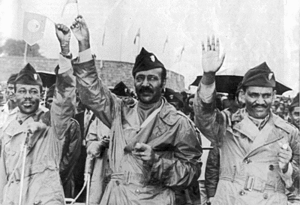
-
 Algeria (1965–1976; 1992–1994–2011)
Algeria (1965–1976; 1992–1994–2011) -
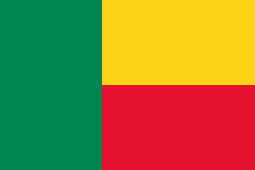 Benin (1963–1964; 1965–1968; 1969–1970; 1972–1975)
Benin (1963–1964; 1965–1968; 1969–1970; 1972–1975) -
 Burkina Faso (1966–1977; 1980–1991; September 17-September 23, 2015)
Burkina Faso (1966–1977; 1980–1991; September 17-September 23, 2015) -
 Burundi (1966–1974; 1976–1979; 1987–1992)
Burundi (1966–1974; 1976–1979; 1987–1992) -
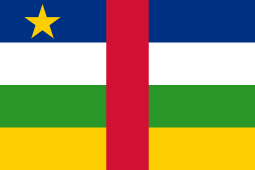 Central African Republic (1966–1979; 1981–1986; 2003–2005; 2013–2014)
Central African Republic (1966–1979; 1981–1986; 2003–2005; 2013–2014) -
 Chad (1975–1979; 1982–1989)
Chad (1975–1979; 1982–1989) -
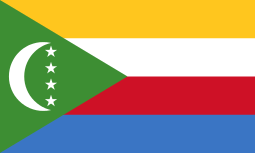 Comoros (1999–2002)
Comoros (1999–2002) -
.svg.png) Democratic Republic of the Congo (1965–1971; 1971–1997)
Democratic Republic of the Congo (1965–1971; 1971–1997) -
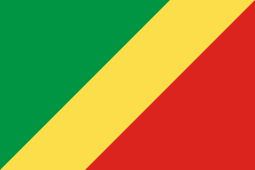 Republic of the Congo (1968–1969; 1977–1979)
Republic of the Congo (1968–1969; 1977–1979) -
 Côte d'Ivoire (1999–2000)
Côte d'Ivoire (1999–2000) -
 Egypt (1953–1956; 2011–2012; July 3, 2013 – currently)
Egypt (1953–1956; 2011–2012; July 3, 2013 – currently) -
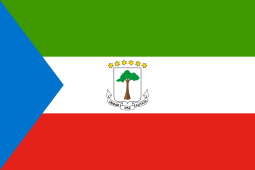 Equatorial Guinea (1979–1987)
Equatorial Guinea (1979–1987) -
.svg.png) Ethiopia (1974–1987)
Ethiopia (1974–1987) -
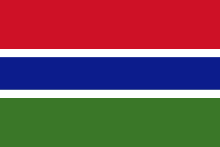 The Gambia (1994–1996)
The Gambia (1994–1996) -
 Ghana (1966–1969; 1972–1975; 1975–1979; 1981–1993)
Ghana (1966–1969; 1972–1975; 1975–1979; 1981–1993) -
 Guinea (1984–1990; 2008–2010)
Guinea (1984–1990; 2008–2010) -
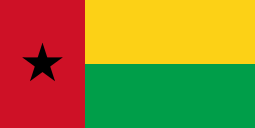 Guinea-Bissau (1980–1984; 1999; 2003; April 12, 2012 – May 11, 2012)
Guinea-Bissau (1980–1984; 1999; 2003; April 12, 2012 – May 11, 2012) -
.svg.png) Lesotho (1986–1993, 2014)
Lesotho (1986–1993, 2014) -
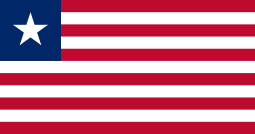 Liberia (1980–1984)
Liberia (1980–1984) -
.svg.png) Libya (1969–1977; 1977–2011)
Libya (1969–1977; 1977–2011) -
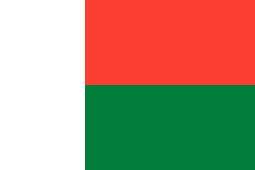 Madagascar (1972–1976)
Madagascar (1972–1976) -
 Mali (1968–1992; March 21, 2012 – April 12, 2012)
Mali (1968–1992; March 21, 2012 – April 12, 2012) -
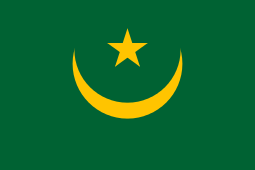 Mauritania (1978–1979; 1979–1992; 2005–2007; 2008–2009)
Mauritania (1978–1979; 1979–1992; 2005–2007; 2008–2009) -
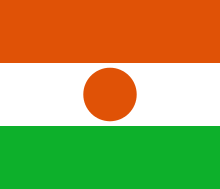 Niger (1974–1989; 1996; 1999; 2010–2011)
Niger (1974–1989; 1996; 1999; 2010–2011) -
 Nigeria (1966–1975; 1975–1979; 1983–1985; 1985–1993; 1993–1998; 1998–1999)
Nigeria (1966–1975; 1975–1979; 1983–1985; 1985–1993; 1993–1998; 1998–1999) -
.svg.png) Rwanda (1973–1975)
Rwanda (1973–1975) -
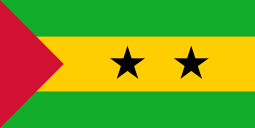 Sao Tome and Principe (1995; 2003)
Sao Tome and Principe (1995; 2003) -
 Sierra Leone (1967–1968; 1992–1996; 1997–1998)
Sierra Leone (1967–1968; 1992–1996; 1997–1998) -
 Somalia (1969–1976; 1980–1991)
Somalia (1969–1976; 1980–1991) -
 Sudan (1958–1964; 1969–1971; 1985–1986; 1989–1993)
Sudan (1958–1964; 1969–1971; 1985–1986; 1989–1993) -
 Togo (1967–1979)
Togo (1967–1979) -
 Uganda (1971–1979; 1985–1986)
Uganda (1971–1979; 1985–1986)
North Americas
-
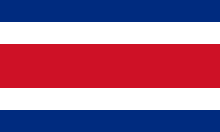 Costa Rica (1868–1870; 1876–1882; 1917–1919)
Costa Rica (1868–1870; 1876–1882; 1917–1919) -
 Cuba (1933; 1952–1959)
Cuba (1933; 1952–1959) -
 Dominican Republic (1899; 1930–1961)
Dominican Republic (1899; 1930–1961) -
 El Salvador (1885–1911; 1931–1982)
El Salvador (1885–1911; 1931–1982) -
 Haiti (1950; 1956–1957; 1986–1990; 1991–1994)
Haiti (1950; 1956–1957; 1986–1990; 1991–1994) -
 Honduras (1956–1957; 1963–1971; 1972–1982)
Honduras (1956–1957; 1963–1971; 1972–1982) -
 Nicaragua (1937–1956; 1967–1979)
Nicaragua (1937–1956; 1967–1979) -
 Panama (1968–1989)
Panama (1968–1989) -
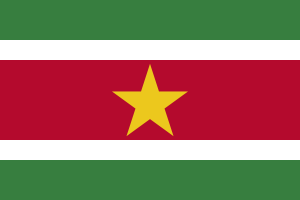 Suriname (1980–1988)
Suriname (1980–1988)
South Americas
-
 Argentina (1930–1932; 1943–1946; 1955–1958; 1966–1973; 1976–1983)
Argentina (1930–1932; 1943–1946; 1955–1958; 1966–1973; 1976–1983) -
 Bolivia (1839–1843; 1848; 1857–1861; 1861; 1864–1872; 1876–1879; 1899; 1920–1921; 1930–1931; 1936–1940; 1946–1947; 1951–1952; 1964–1966; 1970–1979;1980-1982)
Bolivia (1839–1843; 1848; 1857–1861; 1861; 1864–1872; 1876–1879; 1899; 1920–1921; 1930–1931; 1936–1940; 1946–1947; 1951–1952; 1964–1966; 1970–1979;1980-1982) -
.svg.png) Brazil (1964–1985)
Brazil (1964–1985) -
 Chile (1924–1925; 1925; 1932; 1973–1990)
Chile (1924–1925; 1925; 1932; 1973–1990) -
 Colombia (1953–1958)
Colombia (1953–1958) -
 Ecuador (1876–1883; 1935–1938; 1947; 1963–1966; 1972–1979)
Ecuador (1876–1883; 1935–1938; 1947; 1963–1966; 1972–1979) -
 Guatemala (1944–1945; 1954–1957; 1957–1966; 1970–1986)
Guatemala (1944–1945; 1954–1957; 1957–1966; 1970–1986) -
.svg.png) Mexico (1876; 1877–1880; 1884–1911)
Mexico (1876; 1877–1880; 1884–1911) -
 Paraguay (1940-1948; 1954-1989)
Paraguay (1940-1948; 1954-1989) -
 Peru (1842–1844; 1865–1867; 1872; 1879–1881; 1914–1915; 1930–1939; 1948–1956; 1962–1963; 1968–1980)
Peru (1842–1844; 1865–1867; 1872; 1879–1881; 1914–1915; 1930–1939; 1948–1956; 1962–1963; 1968–1980) -
 Uruguay (1865–1868; 1876–1879; 1933–1938; 1973–1985)
Uruguay (1865–1868; 1876–1879; 1933–1938; 1973–1985) -
.svg.png) Venezuela (1858–1859; 1859–1861; 1861–1863; 1908–1913; 1922–1929; 1931–1935; 1948–1958)
Venezuela (1858–1859; 1859–1861; 1861–1863; 1908–1913; 1922–1929; 1931–1935; 1948–1958)
Asia
-
 Burma (Myanmar) (1962–1974; 1988–2011)
Burma (Myanmar) (1962–1974; 1988–2011) -
.svg.png) Iran (1953–1957; 1978–1979)
Iran (1953–1957; 1978–1979) -
%3B_Flag_of_Syria_(1963-1972).svg.png) Iraq (1933–1935; 1937–1938; 1949–1950; 1952–1953; 1958–1963; 1963–1979)
Iraq (1933–1935; 1937–1938; 1949–1950; 1952–1953; 1958–1963; 1963–1979) -
 South Korea (1961–1963, 1980)
South Korea (1961–1963, 1980) -
 Pakistan (1958–1971; 1977–1988; 1999–2008)
Pakistan (1958–1971; 1977–1988; 1999–2008) -
%3B_Flag_of_Syria_(1963-1972).svg.png) Syria (1949; 1951–1954; 1963–1972)
Syria (1949; 1951–1954; 1963–1972) -
 Thailand (1958–1973; 2006–2007; 2014–present)
Thailand (1958–1973; 2006–2007; 2014–present) -
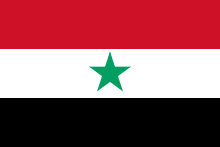 North Yemen (1962–1967; 1974–1982)
North Yemen (1962–1967; 1974–1982)
Europe
-
 Bulgaria (1934–1935; 1944–1946)
Bulgaria (1934–1935; 1944–1946) -
 France (1870–1871)
France (1870–1871) -
.svg.png) Greece (1936–1941; 1967–1974)
Greece (1936–1941; 1967–1974) -
 Poland (1926–1935; 1981–1983)
Poland (1926–1935; 1981–1983) -
 Portugal (1926–1933; 1974-1976)
Portugal (1926–1933; 1974-1976) -
 Russia (1918–1920)
Russia (1918–1920) -
.svg.png) Spain (1923–1930; 1936-1975)
Spain (1923–1930; 1936-1975) -
 Turkey (1960–1961; 1971–1973; 1980–1983)
Turkey (1960–1961; 1971–1973; 1980–1983)
Oceania
See also
- Military rule (disambiguation)
- Khakistocracy
- Films depicting Latin American military dictatorships
- List of political leaders who held active military ranks in office
References
- ↑ Cheibub, José Antonio; Jennifer Gandhi; James Raymond Vreeland (2010-04-01). "Democracy and dictatorship revisited". Public Choice. 143 (1-2): 67–101. doi:10.1007/s11127-009-9491-2. ISSN 0048-5829. Retrieved 2014-03-24.